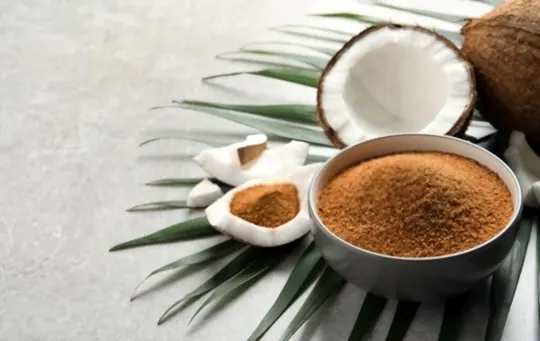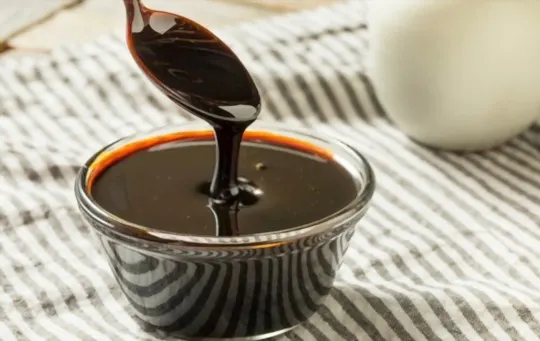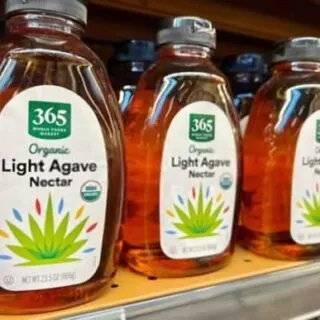If you’ve ever swapped sugar for agave nectar in a recipe, then you know it’s a pretty intense sweetener.
It’s also pretty controversial—some people love it while others think it’s nothing more than a glorified form of sugar.
Regarding its health benefits, agave nectar is a bit of a mixed bag.
On the one hand, it’s lower on the glycemic index than regular sugar, which means it doesn’t cause blood sugar spikes like other sweeteners.
However, it is higher in fructose, which has been linked to several health problems when consumed in large amounts.
That being said, agave nectar does have some benefits that make it a better choice than other sweeteners—especially if you use it in moderation.
But what if you can’t or won’t eat agave nectar? Don’t worry – there are plenty of substitutes out there.
We’ve gathered the best of the best for you.
So, we’ve got you covered if you need an agave nectar substitute for baking or just want something to drizzle on your morning oatmeal.
In this article, we’ll discuss the five best substitutes for agave nectar.
What is Agave Nectar?

Agave nectar is a type of syrup that is derived from the agave plant.
It is widely used as a sweetener in food and beverages and has a similar taste to honey.
Agave nectar is made by extracting the sap from the agave plant and then boiling it down to form a thick syrup.
The finished product typically contains between 75-90% fructose.
Because of its high fructose content, agave nectar has a very sweet taste.
It is also more calorie-dense than other types of sugar, and it can be used as a replacement for honey or sugar in many recipes.
When choosing agave nectar, it is important to select a product that is 100% pure, as some brands add other sweeteners or fillers to their syrups.
Here are some tips for using agave nectar:
- To sweeten coffee or tea, add a few drops of agave nectar.
- When baking, replace sugar with agave nectar in a 1:1 ratio.
- Use agave nectar to make healthy smoothies or sauces.
- Drizzle agave nectar over pancakes or oatmeal for a touch of sweetness.
The 5 Best Substitutes for Agave Nectar
If you’re looking for a healthy alternative to refined sugar, agave nectar is a great choice.
However, it can be expensive and hard to find.
If you can’t find agave nectar or if you’re looking for a cheaper option, there are several good substitutes.
1 – Maple Syrup

Making the switch from refined sugar to a natural sweetener like maple syrup is a great way to improve your health and add some unique flavor to your favorite recipes.
However, you may find that maple syrup is not always a perfect substitute for other sweeteners like agave nectar.
Here are a few tips for using maple syrup in place of agave nectar:
- Start by using half as much maple syrup as you would agave nectar. You can always add more if needed, but it’s difficult to take away sweetness once it’s been added.
- Maple syrup has a stronger flavor than agave nectar, so it’s important to consider it when using it as a substitute. Choose recipes that will complement the flavor of maple syrup, or be prepared to adjust the other ingredients accordingly.
- Because maple syrup is more viscous than agave nectar, it may not work well in all recipes. If you’re having trouble getting the two to mix together, try heating the maple syrup before adding it to the other ingredients.
2 – Honey

Agave nectar is a popular sweetener but is not the only option.
Honey can be used as a substitute for agave nectar in many recipes.
Honey is a little sweeter than agave nectar, so you may need to use less of it.
You can also add a squeeze of lemon juice to offset the sweetness.
When baking with honey, remember that it browns more quickly than agave nectar, so you may need to lower the oven temperature.
Honey is also more viscous than agave nectar, so it may not blend as easily into liquids.
Generally speaking, though, honey makes a great substitute for agave nectar in most recipes.
3 – Coconut Sugar

Coconut sugar is made from the sap of the flower bud stem of the coconut palm.
It has a caramel-like flavor and can be used as a one-to-one replacement for agave nectar in recipes.
Coconut sugar is lower on the glycemic index than refined sugar, so it doesn’t cause spikes in blood sugar levels.
It’s also a good potassium, magnesium, zinc, and iron source.
To substitute coconut sugar for agave nectar, simply use an equal amount.
You may need to experiment with the amount a bit to get the desired sweetness.
Coconut sugar can also be used in place of brown sugar or honey.
When substituting in baking recipes, you may need to add a little extra moisture, such as an extra tablespoon of milk or water, since coconut sugar doesn’t dissolve as easily as refined sugar.
4 – Stevia

Stevia is a plant that is native to South America.
The leaves of the plant have been used for centuries as a sweetener.
The plant is now grown in many parts of the world, and its leaves are used to make various products, including powders, liquids, and extracts.
In baking or cooking, stevia can be a great substitute for agave nectar.
The main difference between the two sweeteners is that stevia is much sweeter than agave nectar.
As a result, you will need to use less stevia than you would agave nectar to achieve the same level of sweetness.
Another difference is that stevia has a bit of a bitter aftertaste, so it may not be suitable for all recipes.
5 – Molasses

While agave nectar is becoming a popular sweetener, molasses is still an excellent choice for many recipes.
Both molasses and agave nectar are made from plants and have a similar sweetness.
However, there are some key differences between the two sweeteners.
Molasses is made from sugar cane or beet juice that has been boiled down and then purified.
This process gives it a rich, deep flavor that some people say tastes like caramel.
In contrast, agave nectar is made from the sap of the agave plant and has a lighter, milder flavor.
When substituting molasses for agave nectar, use a little fewer molasses since it is more concentrated.
You may also want to reduce the number of other sweeteners in the recipe to balance out the sweetness.
Finally, remember that molasses will add additional color and depth of flavor to your dish.
Conclusion
In conclusion, agave nectar is a great alternative to sugar and honey.
It has a lower glycemic index and is sweeter than sugar.
It is also a good choice for people with diabetes or those looking to reduce sugar intake.
There are a few other substitutes for agave nectar that are just as good, if not better.
These include maple syrup, honey, coconut sugar, stevia, and molasses.
All of these substitutes have their unique flavor that can add a special touch to your favorite recipes.

The 5 Best Substitutes for Agave Nectar
Ingredients
- Maple Syrup
- Honey
- Coconut Sugar
- Stevia
- Molasses
Instructions
- Choose your preferred substitute from the list of options.
- Organize all of your ingredients.
- Follow the substitution ratio to determine how much is required in your recipe.
